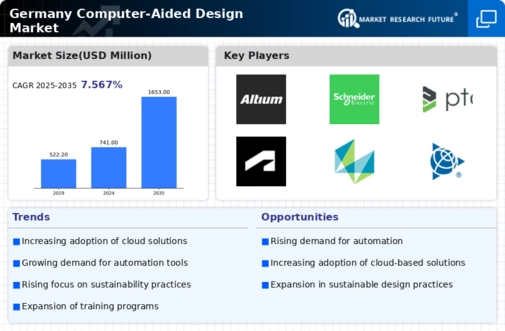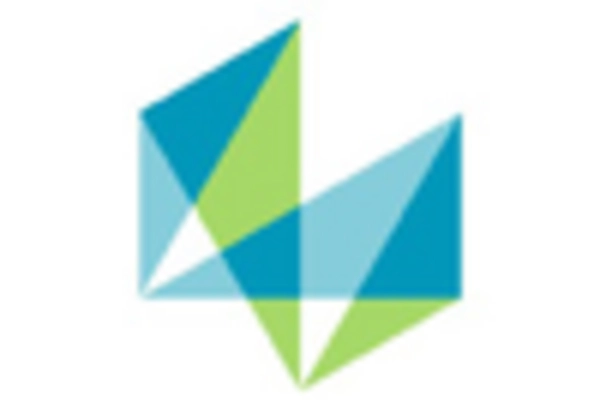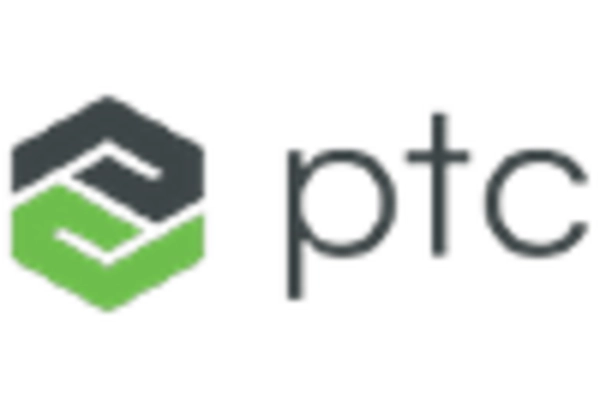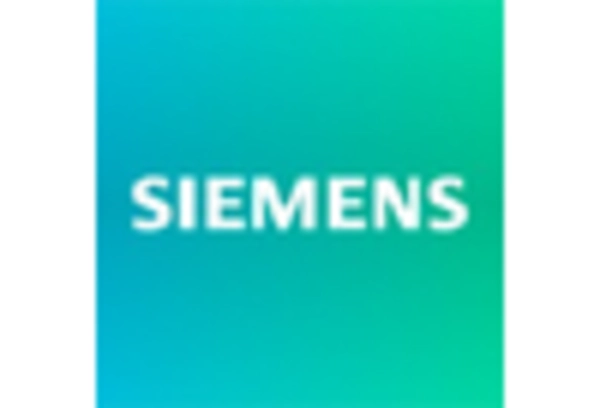Increased Investment in R&D
The computer-aided design market is benefiting from increased investment in research and development (R&D) activities. Companies are allocating substantial budgets to develop cutting-edge CAD technologies that can address the evolving needs of various sectors. In 2025, it is estimated that R&D spending in the CAD sector will reach €1.2 billion, reflecting a commitment to innovation and improvement. This investment is likely to lead to the introduction of new features, such as enhanced simulation capabilities and improved user interfaces, which can significantly enhance the design process. Moreover, collaboration between academic institutions and industry players is fostering a culture of innovation, further propelling the growth of the computer aided-design market. As a result, the market is expected to expand as organizations seek to leverage advanced technologies to stay competitive.
Growing Adoption of 3D Printing
The computer-aided design market is increasingly influenced by the growing adoption of 3D printing technologies. As industries recognize the benefits of additive manufacturing, there is a corresponding demand for CAD tools that can seamlessly integrate with 3D printing processes. This trend is particularly evident in sectors such as aerospace and healthcare, where rapid prototyping and custom part production are becoming standard practices. By 2025, it is projected that the market for 3D printing in Germany will reach €3 billion, driving the need for advanced CAD solutions that can optimize designs for printability. Consequently, the computer aided-design market is likely to expand as more companies invest in software that supports 3D printing, enabling them to innovate and reduce production costs.
Rising Demand for Customization
In Germany, the computer aided-design market is witnessing a rising demand for customization in design processes. Industries such as manufacturing and consumer goods are increasingly seeking tailored solutions to meet specific client needs. This trend is reflected in the growing adoption of CAD tools that offer customizable features and functionalities. As businesses strive to differentiate their products in a competitive landscape, the ability to create unique designs becomes paramount. Reports suggest that approximately 60% of companies in the manufacturing sector are investing in advanced CAD systems to enhance their design capabilities. This shift towards customization not only fosters innovation but also drives the growth of the computer aided-design market, as more organizations recognize the value of personalized design solutions.
Focus on Collaborative Design Environments
The computer-aided design market is increasingly focusing on collaborative design environments. As teams become more geographically dispersed, the need for tools that facilitate real-time collaboration is paramount. This trend is leading to the development of CAD solutions that support cloud-based functionalities, allowing multiple users to work on a single project simultaneously. In 2025, it is anticipated that approximately 45% of CAD users in Germany will utilize collaborative tools to enhance their design processes. This shift not only improves communication among team members but also accelerates project timelines. The emphasis on collaboration is likely to drive the growth of the computer aided-design market, as organizations seek to leverage these tools to enhance productivity and innovation.
Technological Advancements in CAD Software
The computer-aided design market is experiencing a surge due to rapid technological advancements in CAD software. Innovations such as parametric modeling, 3D visualization, and real-time rendering are enhancing design capabilities. As of 2025, the market is projected to grow at a CAGR of approximately 8.5%, driven by the increasing demand for sophisticated design tools across various industries, including automotive and architecture. These advancements not only improve efficiency but also reduce time-to-market for new products. Furthermore, the integration of machine learning algorithms into CAD tools is enabling designers to automate repetitive tasks, thereby allowing them to focus on more complex design challenges. This trend indicates a shift towards more intelligent design solutions, which is likely to attract more users to the computer aided-design market.

















Leave a Comment